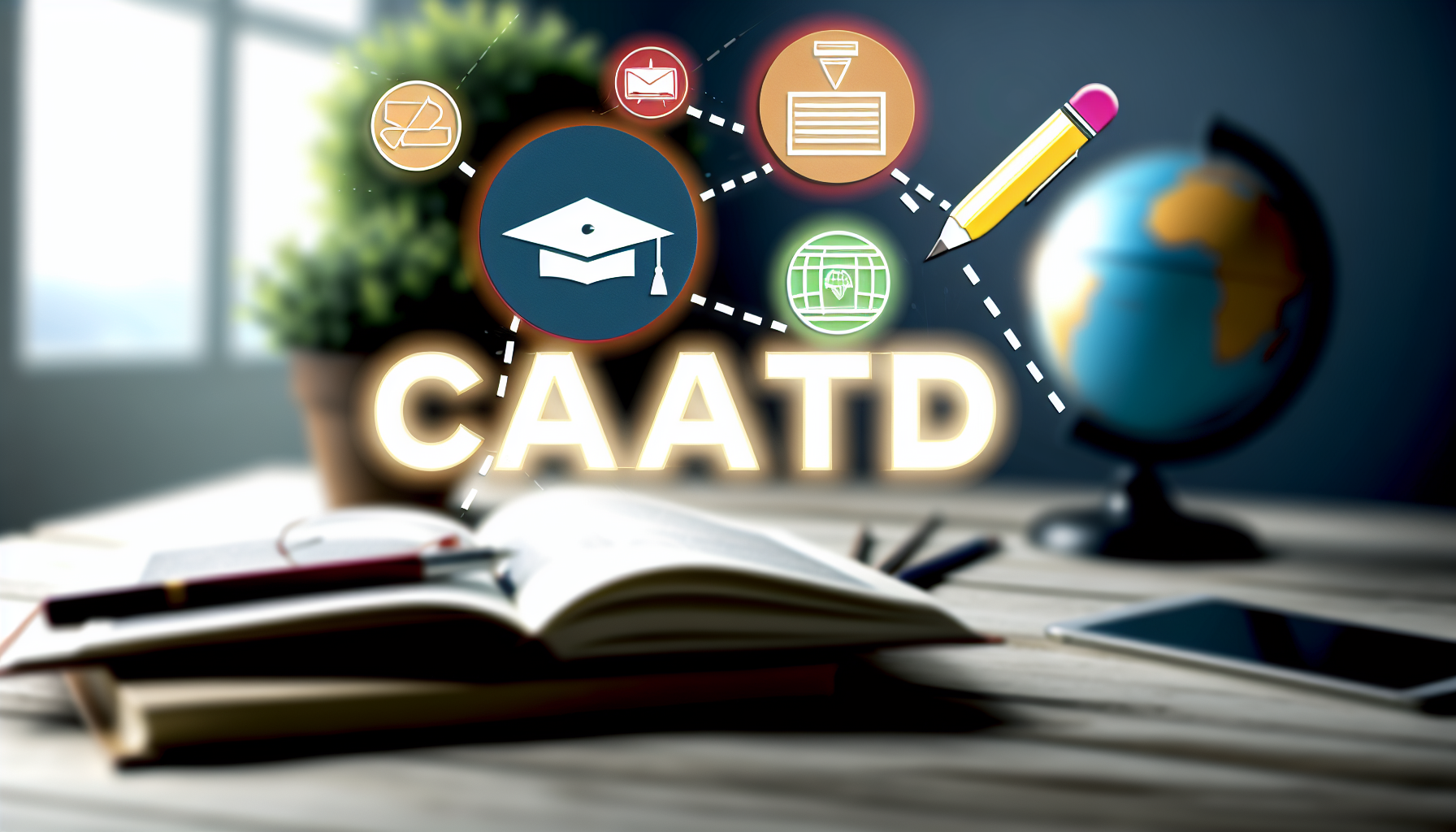Introduction to AACSB Accreditation
AACSB Accreditation serves as a hallmark of excellence in business education, signifying that an institution meets rigorous standards of quality in its teaching, research, and student learning. Founded in 1916, the Association to Advance Collegiate Schools of Business (AACSB) is recognized globally, and its accreditation process focuses on key areas like the curriculum, faculty qualifications, and student outcomes. Achieving AACSB Accreditation is a significant milestone for business schools, enhancing their prestige and providing a competitive edge in attracting students and faculty [Source: AACSB].
The impact of AACSB Accreditation extends to students and faculty as well. For students, attending an AACSB-accredited school often translates to better job prospects, as employers frequently regard graduates from these institutions as having superior educational preparation [Source: Forbes]. Faculty members benefit from the enhanced academic environment that accreditation fosters, which promotes impactful research and encourages professional development opportunities [Source: BusinessBecause].
In conclusion, AACSB Accreditation is crucial for institutions aspiring to achieve greatness in business education, providing significant advantages to both students and faculty, including improved employment outcomes and a stimulating academic environment conducive to high-quality research and teaching.
Essential Components of a Course Description
A well-crafted course description is integral to meeting AACSB (Association to Advance Collegiate Schools of Business) standards. To enhance transparency and guide student expectations, the description must include specific essential components:
- Course Title: A clear and descriptive title that reflects the content and scope of the course.
- Course Code: A unique identifier that assists in cataloging and registration processes.
- Course Overview: A brief introduction that outlines the aims and objectives of the course, providing a snapshot of what students can expect to learn and achieve.
- Learning Outcomes: Specific and measurable outcomes that detail what students should know or be able to do by the end of the course. These outcomes align with broader program goals and AACSB standards regarding student competence and learning effectiveness.
- Prerequisites: A listing of any necessary prior courses or knowledge required for enrollment, ensuring students are adequately prepared for the coursework ahead.
- Instructional Methodology: Description of teaching approaches, including lectures, discussions, group work, or online components, which reflects diverse learning styles and pedagogical effectiveness.
- Assessment Methods: Clear information on how student performance will be evaluated, including exam formats, project work, participation, and any other evaluation criteria.
- Textbooks and Resources: A list of key materials and resources that will support learning, allowing students to prepare effectively for classes.
- Alignment with Accreditation Standards: Explicit mention of how the course aligns with AACSB requirements, emphasizing its contribution to the overall quality and rigor of the program.
For additional insights on structuring effective course descriptions and ensuring they comply with AACSB standards, consider exploring resources at Course Description. Each element plays a vital role in providing clarity and ensuring adherence to accreditation standards while enhancing the educational experience for students.
Steps to Download Course Descriptions
To download course descriptions that comply with AACSB (Association to Advance Collegiate Schools of Business) requirements, follow these steps:
- Access Course Catalog: Begin by navigating to your institution’s course catalog or the designated resource where course descriptions are stored. Institutions often have an online portal for educators and administrators.
- Standardize Search Parameters: Use standardized search parameters related to AACSB requirements, such as course format, title, and department. This ensures the information aligns with AACSB criteria, which emphasize clarity and appropriateness of course content.
- Select Desired Courses: From the displayed results, select the specific courses for which you want descriptions. Ensure they are active listings for the current or upcoming academic term.
- Download Options: Once you’ve selected the courses, look for options to download the descriptions. Institutions may provide multiple formats such as PDF or CSV. Choose the format that best suits your needs.
- Review Compliance: After downloading, check the descriptions against AACSB standards. This typically involves ensuring that learning outcomes and content expectations are clearly articulated in alignment with AACSB requirements.
- Organize Data: For ease of access, organize the downloaded files in a structured manner. Create a central folder for course descriptions, labeling files with course codes or titles for quick reference.
- Seek Clarification if Needed: If you encounter any inconsistencies or lack of clarity in the descriptions, reach out to your department heads or academic affairs office for verification. Their input can assist in ensuring compliance.
- Maintain Up-to-Date Records: Regularly update the course descriptions to reflect any curriculum changes or updates in accreditation standards, as this is vital for ongoing AACSB compliance.
Following these steps will help educators and administrators efficiently manage course descriptions while adhering to AACSB guidelines. For more detailed guidance on course structure and quality standards, you may refer to the resources at Course Description.
Best Practices for Crafting Course Descriptions
Creating effective course descriptions is crucial for institutions seeking AACSB accreditation. Here are some best practices to enhance compliance and clarity:
- Align with Learning Objectives: Each course description should clearly outline the learning objectives and outcomes. This alignment not only helps students understand what they will gain but also demonstrates curriculum coherence, a key aspect of AACSB standards. According to the AACSB, well-defined learning goals are necessary for accreditation compliance [Source: AACSB].
- Use Clear and Concise Language: Avoid jargon and overly technical language that may confuse prospective students. Instead, utilize simple and direct language to ensure accessibility. For example, instead of saying “Students will acquire knowledge of advanced economic theories,” phrase it as “Students will learn about key economic concepts and their real-world applications.”
- Include Course Prerequisites: Indicating any necessary prerequisites helps set clear expectations for student preparedness. This helps maintain academic standards and ensures that students have the necessary background to succeed in the course.
- Highlight Course Relevance: Incorporating the practical relevance of the course content can enhance student interest and engagement. Explain how the material applies to real-world situations, aligns with industry standards, or enhances career prospects.
- Incorporate Assessment Methods: Clearly mention how students will be evaluated. Outline the types of assessments such as exams, projects, or presentations to clarify expectations and provide insight into the course structure.
- Review and Revise: Regularly update course descriptions based on faculty feedback and evolving best practices in curriculum design. This iterative process can improve clarity and compliance with AACSB guidelines.
- Seek Feedback from Stakeholders: Engage faculty teaching the course, current students, and alumni to review course descriptions. Their insights can reveal areas for improvement and ensure that the descriptions resonate with the target audience.
- Utilize Templates for Consistency: Establishing a standardized template for course descriptions can help ensure consistency across the institution, which is favorable for AACSB’s focus on standardized educational practices [Source: AIS].
By following these best practices, institutions can enhance their course descriptions, thereby improving their chances of meeting AACSB accreditation requirements while providing valuable information to prospective students. For more insights on writing effective course materials, visit Course Description.
Resources and Further Reading
For those navigating the AACSB accreditation process, a variety of resources are available to deepen your understanding and assist you in meeting the standards required. Here’s a curated list of articles, tools, and external links:
- AACSB Official Website – Explore detailed guidelines, resources, and support for the AACSB accreditation process directly from the source.
- AACSB Accreditation: The Journey – This comprehensive article breaks down the steps involved in achieving AACSB accreditation, detailing what institutions need to prepare for each phase.
- Best Practices for AACSB Accreditation – A valuable collection of best practices and insights shared by accredited institutions, which can help streamline your accreditation path.
- Quality Assurance Framework in Business Schools – A resource discussing quality assurance frameworks that can assist institutions in forming quality metrics relevant to AACSB standards.
- Webinars and Workshops – AACSB hosts regular webinars and workshops focusing on accreditation trends, peer reviews, and assessment strategies. Stay updated with the latest offerings.
- Self-Assessment Toolkit – Utilize AACSB’s self-assessment toolkit to evaluate your institution’s readiness for the accreditation process.
- Case Studies of Successful Accreditation – Review various case studies that highlight the strategies and challenges faced by other institutions during their accreditation process.
- Networking Opportunities – Join relevant forums and professional networks, such as the Academy of Management or local AACSB chapters, to connect with peers and share experiences.
These resources collectively offer a wealth of information and guidance for institutions pursuing AACSB accreditation. For further exploration, don’t forget to check other articles related to AACSB topics on Course Description.
Sources
- AACSB – Accreditation FAQ
- AACSB – Official Website
- AACSB – Publications
- AACSB – Best Practices for AACSB Accreditation
- Forbes – 5 Reasons Why AACSB Accredited Business Schools are a Smart Choice
- BusinessBecause – AACSB Accreditation: The Expert Insight
- Course Description – AACSB Accreditation: The Journey
- Course Description – Main Page
- AIS – Best Practices in Course Description
- EFMD – Quality Assurance Framework in Business Schools
- AACSB – Events
- AACSB – Self-Assessment Toolkit
- Academy of Management










